The term “dystopia” was coined by English philosopher John Stuart Mill in 1868 as he denounced the government’s Irish land policy. “It is, perhaps, too complimentary to call them Utopians, they ought rather to be called dys-topians,” he said. “What is commonly called Utopian is something too good to be practicable, but what they appear to favour is too bad to be practicable.” Since then, dystopia has found its home, not in parliament but in the world of fiction; novels, comics, and video games have developed different dystopian realms, all moving in the same direction: the mechanisation of the world falling apart.
We have come a long way from The Jetsons to Ready Player One when envisioning the future. The cyberpunk subculture is intertwined with dystopia as an act of rebellion, aesthetic carrier of the movement and youth force.
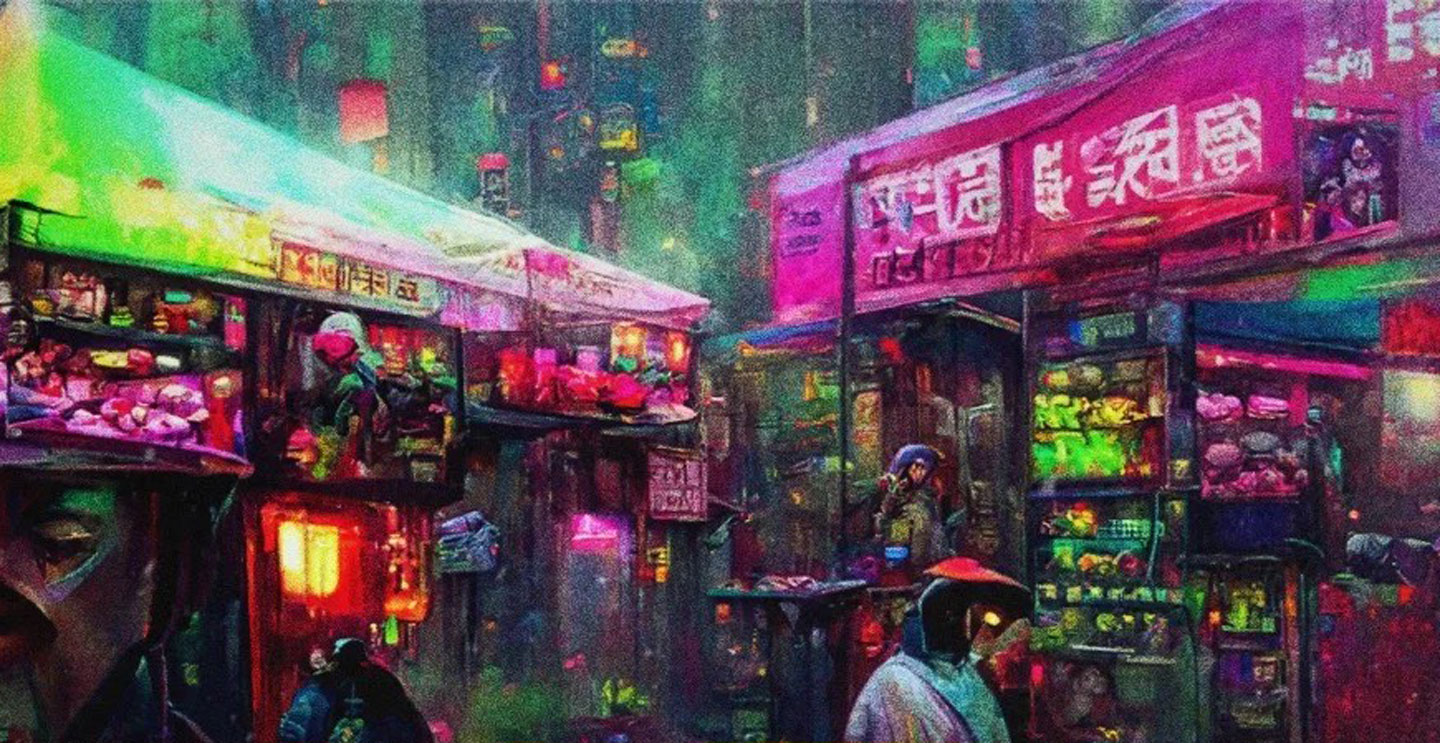
Cyberpunk setting by artist Xiao Hong Shu / Disco 地府轩 The early days of the Internet placed cyberpunks in a cyber-goth kind of scene. The Matrix and Total Recall films did a great job introducing cyber-goth culture to the masses. From Acronym (a German technical apparel brand renowned for its uncompromising focus on functional fashion, with punk, techwear, e-girl, and other cyber styles at its core) to Rick Owens and recently Neurolab (not an IRL clothing brand but a cyberpunk clothing label for digital avatars), even the fashion scene developed a keen taste for cyberpunk and apocalyptic styles with the development of the Internet. It got propelled into a full digital revolution quite similar in scope and intensity to the industrial revolution of the 18th century.
This digital revolution boomed with social media expansion as we witnessed the rise of the Metaverse, digital currencies, NFTs and the communications and exchanges between the physical and digital worlds.
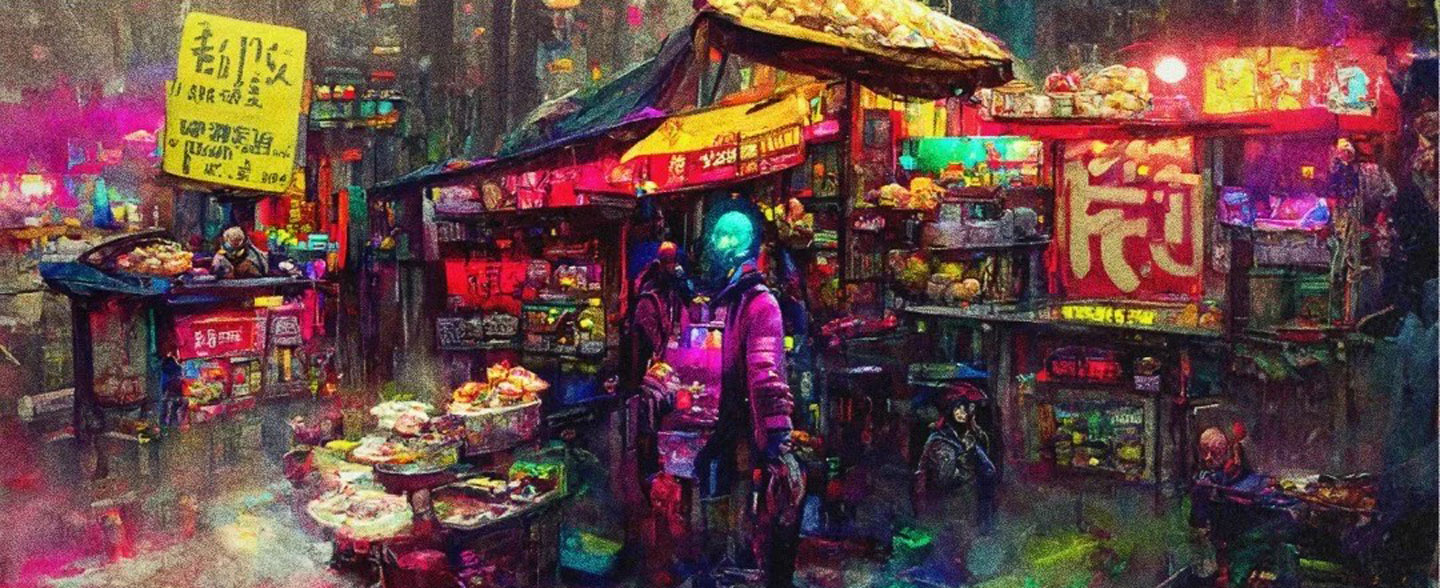
Cyberpunk setting by artist Xiao Hong Shu / Disco 地府轩
As Gen Zers’ aesthetic response to the new phygital world shaped by the Metaverse, cryptocurrencies and NTFs, cyberpunk style has gone mainstream in China. And it is now spreading like wildfire on the Xiaohongshu app
The phygital has found its platform in China on Xiaohongshu or “Little Red Book,” a social media platform mainly focused on visual content. Many young people used it to divert their posts to digital art creation, phygital fashion and self-expression.
Since the rise of the Metaverse, most thought leaders have focused on how people will move into virtual space and how they will build there. Chinese youth are doing the opposite as they blend the digital world with everyday life and take street style, beauty trends and self-expression to a whole new level.
This cyberpunk blend is possible thanks to the design of the Xiaohongshu app and its connection with R-Space, an NFT platform launched in November 2021, where both creators and consumers can meet and trade digital collectibles.
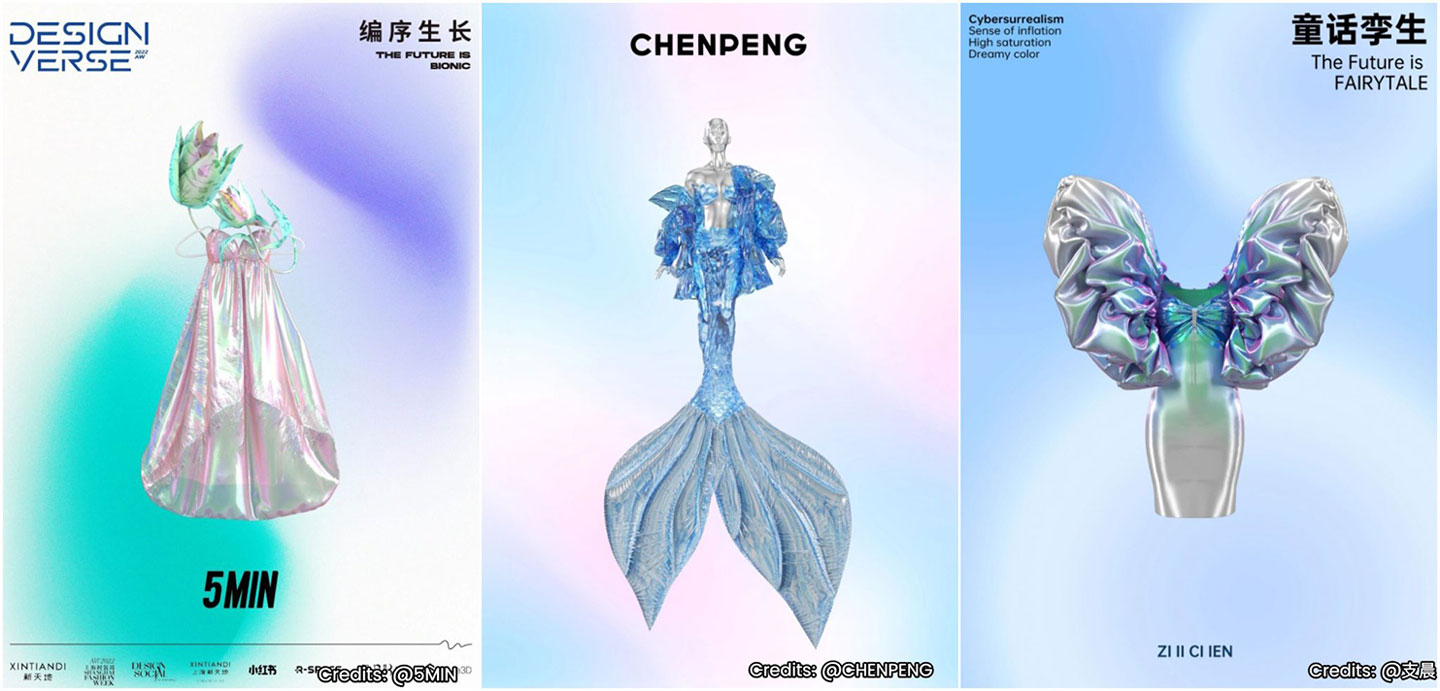
R-Space, an NFT platform launched by Xiaohongshu in 2021. Here, both creators and consumers can trade digital collectibles According to Kirin Lee, Head of R-Space at Xiaohongshu, the app’s long-term NFT strategy will centre on luxury brands, streetwear, and virtual fashion. It will target a young audience that can afford digital products and hopes to one day buy their physical copies.
Opening R-Space made Xiaohongshu a space mainly for creators and their community, supporting talent exposure through the platform and exhibitions, such as the one organised in Xintiandi, Shanghai. The event featured 18 limited-edition virtual fashion pieces from nine domestic brands, including Chen Peng, Masha Ma and Annakiki. That drop sold over 3,000 virtual fashion items ranging from $200 to $600.
Who are the beacons of digital punk in China in these new Roaring Twenties? Discover the creators embracing all this virtuality not as a form of escapism but an empowering aesthetic
Jewellery brand YVMIN’s collaboration with Xiao Yang, a Chinese influencer and model from Chengdu who has been wearing a prosthetic leg for almost 20 years, started a punk/pink revolution in the world of prosthetics.
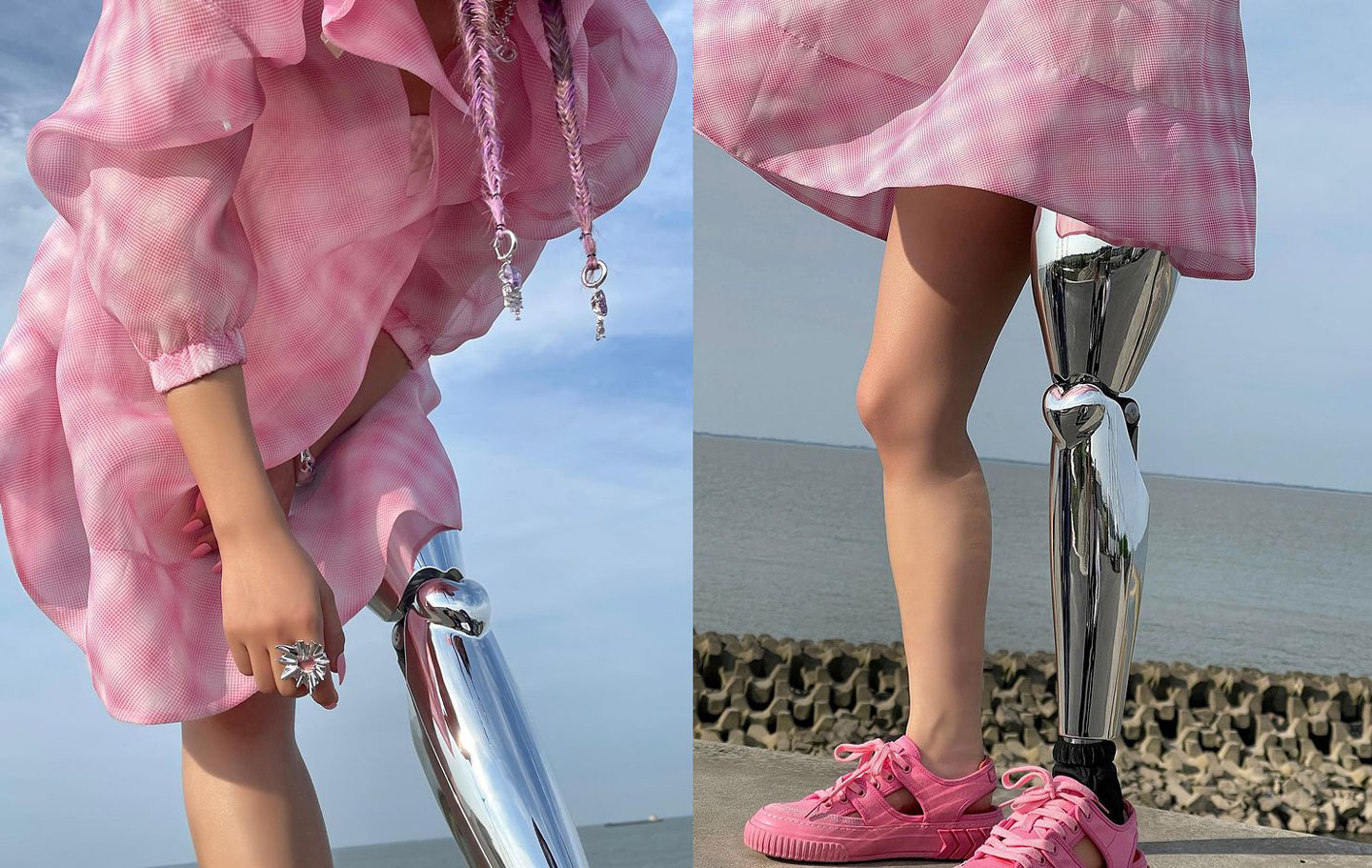
Xiao Yang is an influencer from Chengdu, China, who started a punk/pink revolution with her prosthetic leg YVMIN’s aesthetics is a translucent fever dream of bows, cotton candy, and rabbits merged with liquefied metal. Their shells for prosthetic legs are fashionable, bedazzled and romantic.
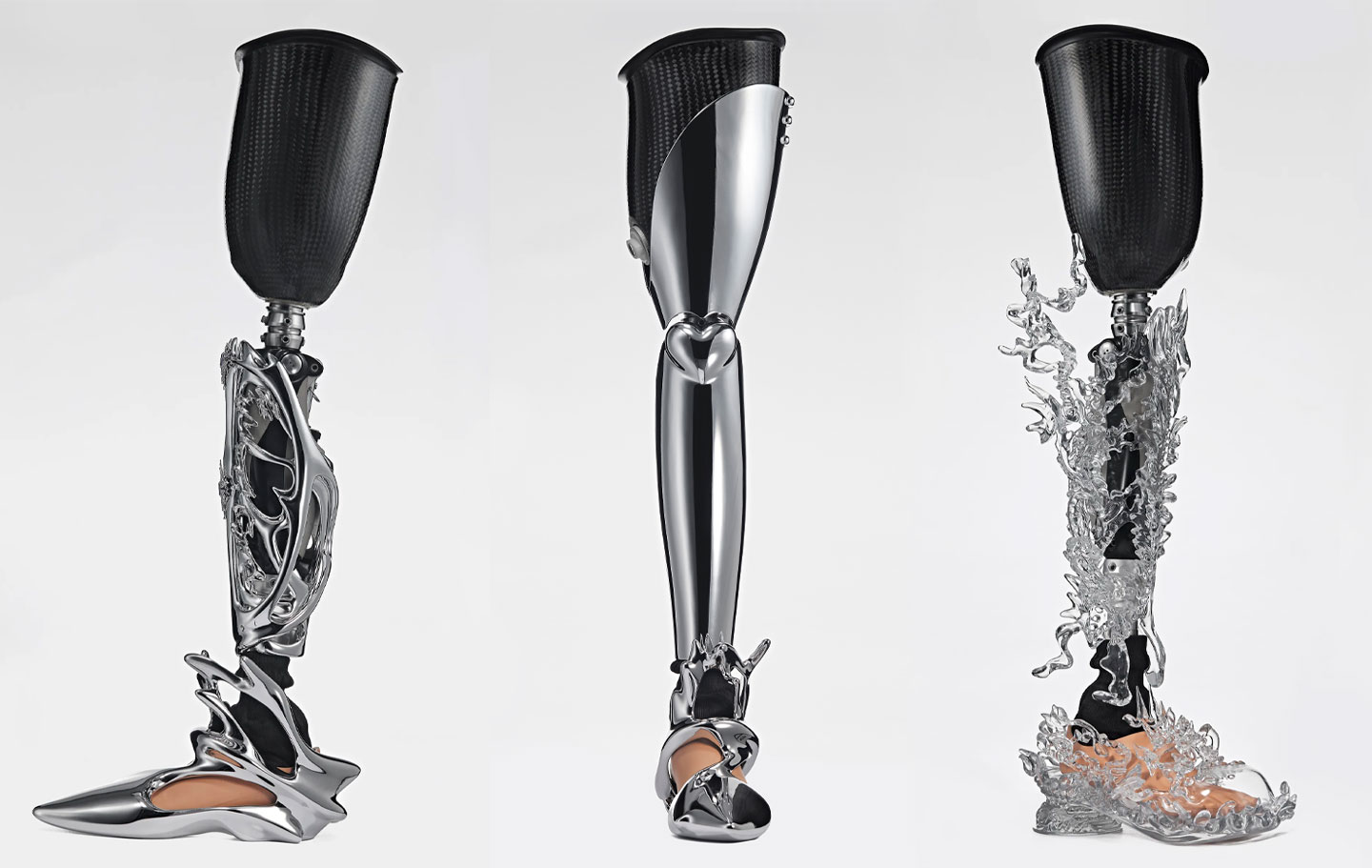
Xiao Yang's prosthetic leg That collaboration was the first sign of the cultural and fashion trend of acceptance and inclusivity. Then, the model, vlogger and photographer Niu Yu, better known by her artistic name Chunyougege, walked the runway at Shanghai Fashion Week last year wearing a styled prosthetic leg.
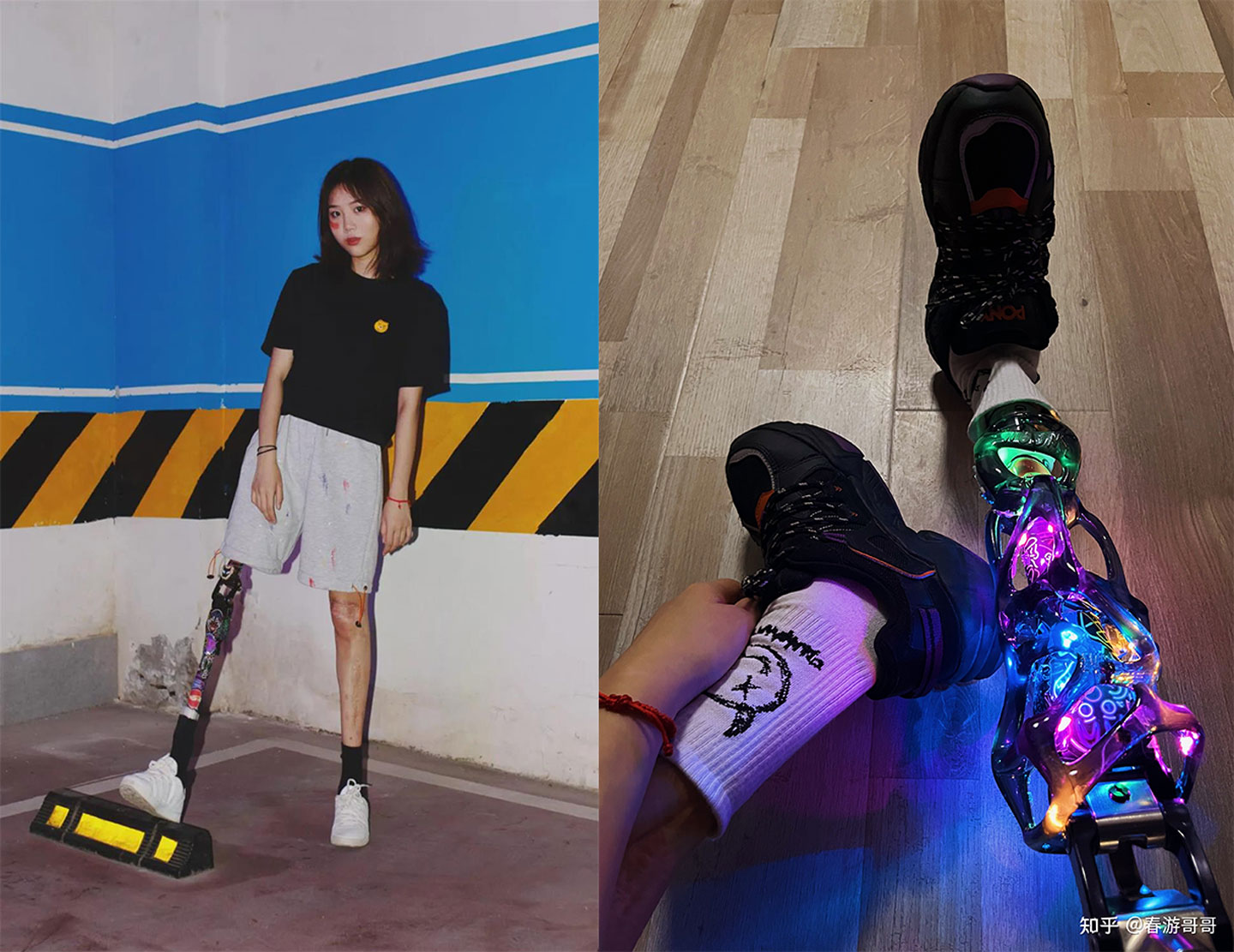
Niu Yu walked the runway at Shanghai Fashion Week last year wearing a stylized prosthetic leg Lucy Qiao, artist and content creator on Xiaohongshu, implemented a similar aesthetic for her dolls living in a world of artificial limbs, post-apocalyptic dogs and female power.
China’s youth culture is refreshingly led by strong female voices who find their strength in creativity and self-expression. They fully understand where this new world is going, they are not afraid to merge the digital and physical worlds, and they do not use virtual reality as a form of escapism but as an aesthetic, like a spice to add to this reality.
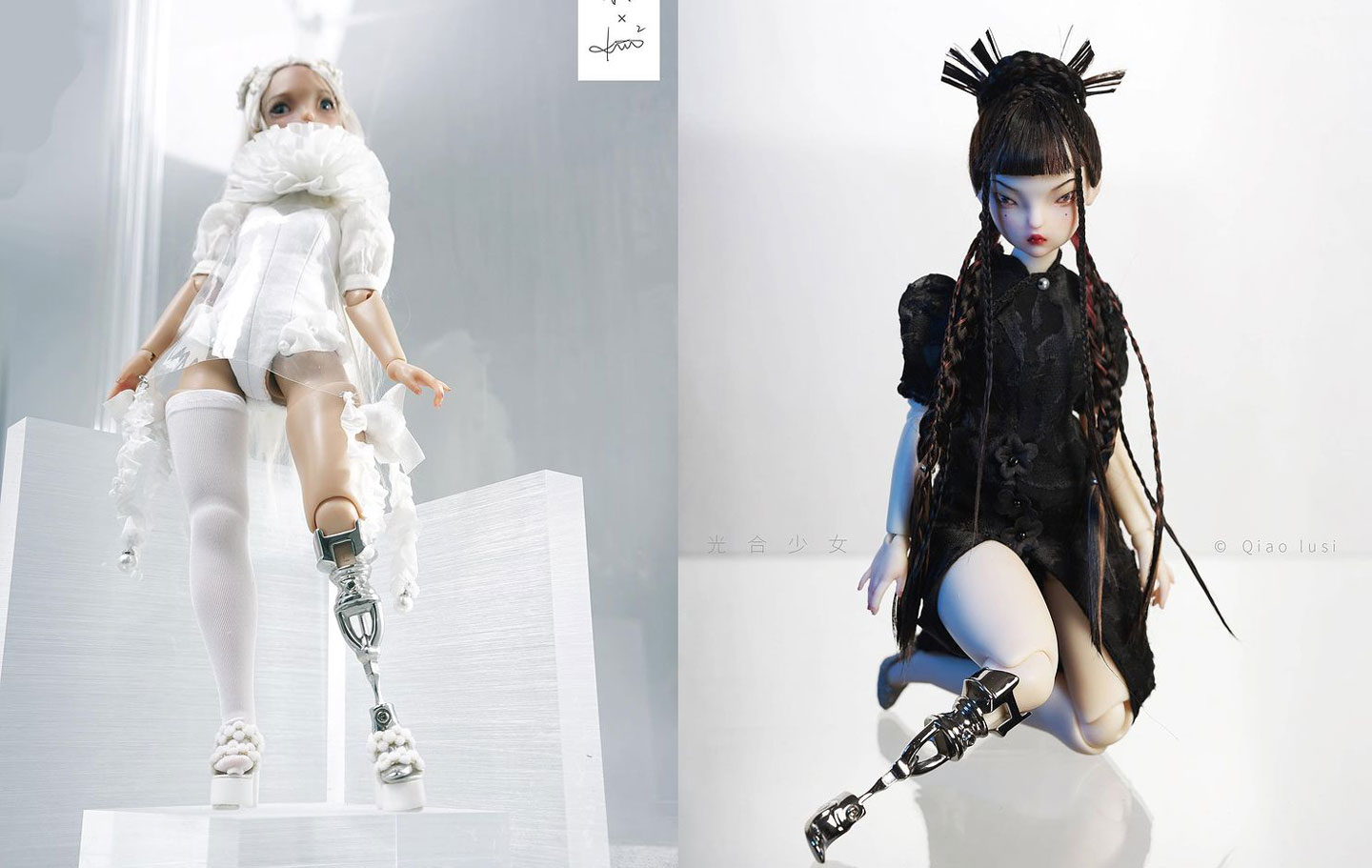
Lucy Qiao implemented a similar aesthetic for her dolls living in a world of artificial limbs, post-apocalyptic dogs and female power The second emerging trend is the great selection of phygital products that are easy to browse and buy on the R-Space platform, ranging from under a 100rmb to skyrocketing luxury-tier prices. The most impressive and relevant thing behind Xiaohongshu and R-Space’s digital worlds is the ease with which models are created: design programs for 3D modelling are accessible to young people, whether they are fashion students or not.
Thus, it seems that Chinese youth have entered the next generation of digital literacy: if common skills used to include how to edit photos, use filters and make short videos that were informative, attractive and viral, digital design is also becoming something many people are familiar with. This leads to many “trickle up” influences, where trends spring from young people through sharing, creating and inspiring each other among peers, and brands then follow the direction of those movements.
Although linked to the idea of the post-apocalypse, cyberpunk does not portray a youth seeking to escape from a physical world that no longer has anything to offer
Digital cyberpunk design spans a multitude of fields: tattoos, digital models, digital fashion, painting, and cinematography. In this multifaceted landscape, Chinese cyberpunk is distinctly local as it combines elements from traditional culture, deconstructs them in new and fun ways, and finally communicates with the world through various creators.
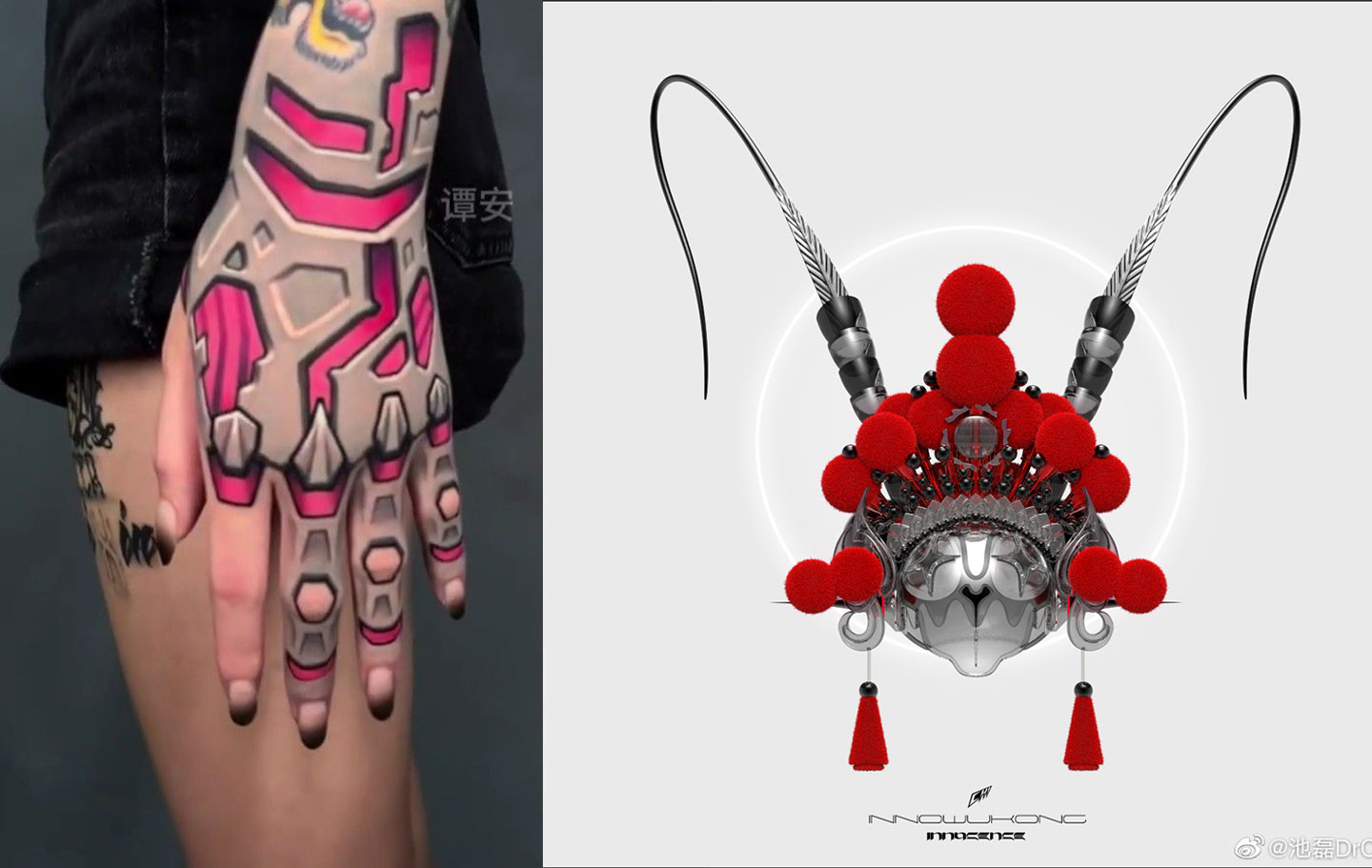
Cyberpunk can mean everything from tattoos to digital collectibles When we talk about cyberpunk, we usually refer to rebellion, subculture, youth culture and a movement informing luxury fashion brands and global trends. What is so organic about Chinese cyberpunk today is the freedom and courage to create and share a new world with others and expose it to the world without being too focused on individualism. It almost seems like cyberpunk is a joint project in which everyone adds their own puzzle piece to create virtual/physical reality. It most definitely comes from a traditional cultural heritage that emphasises a strong sense of community which is finding a new expression in digital media creation.
Cyberpunk is also most commonly associated with the idea of post-apocalypse and a world people are not thriving in but escaping from. It is no coincidence that Ready Player One depicts a reality where young people thrive through gaming and virtual reality, as there is nothing in the physical world worth exploring: the Metaverse concept is based on this idea in some ways. However, the word “apocalypse” does not stand for catastrophe but derives from the ancient Greek word “ἀποκάλυψις,” meaning revelation. The future seems more accurate and brighter if we look at the rise of digitalisation and cyberpunk in a post-revelation world. It seems to have its true footing: creation in a new world.

